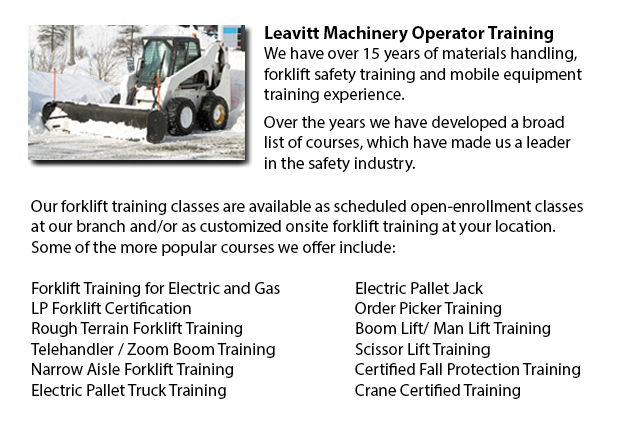
Brampton Skid Steer Ticket - On a skid-steer loader, the lift arms are at the side of the driver along with pivot points at the back of the driver's shoulders. This makes them different than a traditional front loader. Due to the operator's nearness to moving booms, early skid loaders were not as safe as conventional front loaders, especially during the operator's exit and entry. Today's' modern skid-steer loaders have many features in order to protect the driver like fully-enclosed cabs. Similar to several front loaders, the skid-steer model could push materials from one location to another, can load material into a truck or trailer and could carry material in its bucket.
Operation
Generally a skid-steer loader could be utilized on a job location instead of a large excavator by digging a hole from the inside. To start with, the skid-steer loader digs a ramp leading to the edge of the desired excavation, and then it utilizes the ramp so as to excavate material out of the hole. As the excavation deepens, the machinery reshapes the ramp making it steeper and longer. This is a very helpful method for digging underneath a building where there is not adequate overhead clearance for the boom of a large excavator. For example, this is a common scenario when digging a basement underneath an existing home or structure.
The skid-steer loader attachments add much flexibility to the machine. Like for example, conventional buckets on the loaders can be replaced attachments powered by their hydraulics consisting of sweepers, mowers, snow blades, cement mixers, pallet forks, backhoes and tree spades. Some other popular specialized attachments and buckets include wheel saws, snow blades, trenchers, angle booms, dumping hopper, wood chipper machines, grapples, tillers and stump grinders rippers.
History
The front end 3-wheeled loader was invented during nineteen fifty seven, by Cyril and Louis Keller in their hometown of Rothsay, in the state of Minnesota. The Keller brothers created this machine to help mechanize the process of cleaning in turkey barns. This particular machine was light and compact and had a back caster wheel that allowed it to maneuver and turn around within its own length, allowing it to execute the same jobs as a traditional front-end loader.
In the year 1958, the Melroe brothers of Melroe Manufacturing Company in Gwinner, N.D. purchased the rights to the Keller loader. They employed the Keller brothers to continue refining their loader invention. The M-200 Melroe was actually the result of this partnership. This model was a self-propelled loader that was launched to the market in the year 1958. The M-200 Melroe featured a 12.9 HP engine, a 750 lb lift capacity, two independent front drive wheels and a rear caster wheel. By 1960, they replaced the caster wheel along with a rear axle and launched the first 4 wheel skid steer loader which was referred to as the M-400.
The term "Bobcat" is used as a generic term for skid-steer loaders. The M-400 shortly after became the Melroe Bobcat. The M-440 version was powered by a 15.5 HP engine and has rated operating capacity of 1100 lbs. The company continued the skid-steer development into the middle part of the nineteen sixties and introduced the M600 loader.
-
Brampton Aerial Boom Lift Ticket
Brampton Aerial Boom Lift Ticket - Aerial lift trucks might be used to accomplish several different tasks executed in hard to reach aerial places. Many of the tasks associated with this style of jack include performing routine maintenance on building... More -
Brampton Aerial Lift Train the Trainer
Brampton Aerial Lift Train the Trainer - The Aerial Lifts Train the Trainer Certification Program would teach trainers how to efficiently train operators in safe industrial mobile equipment operation. Trainers are provided with in-depth instruction o... More -
Brampton Zoom Boom Training
Brampton Zoom Boom Training - Zoom Boom Training is intended to train operators on variable reach forklifts. The goals of the training are to be able to impart an understanding of the physics of the machinery, and to be able to outline the operator's... More -
Brampton Heavy Equipment Operator Training
Brampton Heavy Equipment Operator Training - Heavy equipment operator training facilities that provide good standards within the industry, providing field performance work and additional machinery training are really sought after training features. S... More -
Narrow Aisle Forklift / Order Picker Training / Electric Pallet Jack / Electric Pallet Truck Training in Brampton
A pallet haul is equipment built in particular for moving pallets of irregular weights and dimensions. They may be used in conjunction with cranes, forklifts and other heavy duty equipment as an appendage piece or to be employed on their own. Pallet... More -
Brampton Overhead Crane Safety Training
Brampton Overhead Crane Safety Training - Overhead crane safety training equips operators with knowledge and skills regarding crane safety measures, accident avoidance, materials handling, and equipment and stock protection. Trainees will learn the k... More -
Brampton Crane Safety Training
Brampton Crane Safety Training - Companies and crane drivers have to know the problems associated to crane safety. Legislation provides rules for the safe maintenance, operation and inspection of lifting machines across North America. Crane Safety co... More -
Brampton Telehandler Training
Brampton Telehandler Training - Telescopic handlers normally known as telehandlers for short, are a really popular piece of heavy construction machinery. They are usually utilized in the construction and agricultural trades. These machines have farth... More

Forklift Certification Brampton
TOLL FREE: 1-888-254-6157
Brampton, Ontario
forkliftcertificationbrampton.com
Email Us
About Us


